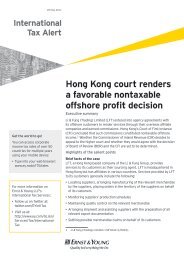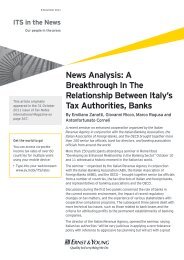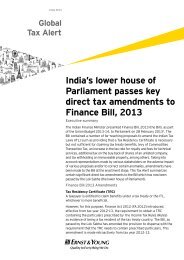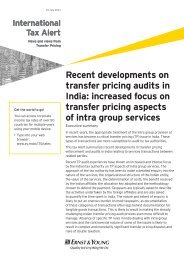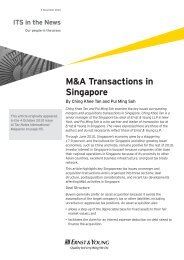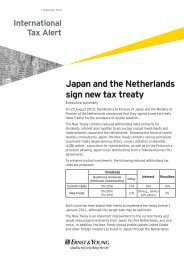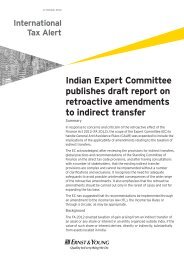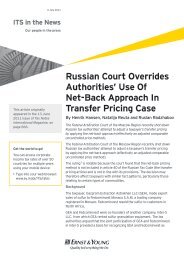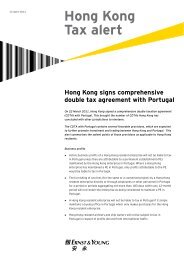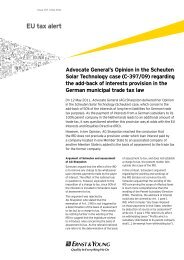(GST) compliance obligations (pdf, 5.62 MB) - Ernst & Young T ...
(GST) compliance obligations (pdf, 5.62 MB) - Ernst & Young T ...
(GST) compliance obligations (pdf, 5.62 MB) - Ernst & Young T ...
You also want an ePaper? Increase the reach of your titles
YUMPU automatically turns print PDFs into web optimized ePapers that Google loves.
Insights<br />
Obtaining VAT refunds in the EU<br />
The Global VAT Director of a multinational based in<br />
Switzerland, which manufactures and distributes<br />
agro-chemical products, talks about the company’s<br />
experience of obtaining refunds in the EU as a non-EU<br />
company:<br />
“Our supply chain activity, which is managed and performed<br />
out of Switzerland, sources the raw materials required<br />
for manufacture and owns all the products up to final<br />
distribution. The Swiss company is registered for VAT in a<br />
number of EU countries. In the majority, it is in a VAT refund<br />
position.”<br />
“Of course the process for refund differs between countries.<br />
In some, refunds are automatic, in others; such as Austria,<br />
VAT credits tend to be only refundable following an<br />
VAT “throughput” increases tax risk<br />
The Head of Indirect Tax Director of a European automotive<br />
company comments on the level of indirect tax risk faced by<br />
multinational companies:<br />
“The management of many blue-chip companies don’t realize<br />
how much is at stake with indirect taxes. But the amount<br />
of VAT handled by a large organization makes it a priority.<br />
You have to think of the “throughput” — that is, all the VAT<br />
you handle or could be responsible for. It’s not just VAT on incountry<br />
sales — you also have to look at purchases. And you<br />
have to remember that exports and other zero-rated and<br />
exempt activities are all liable to VAT unless you can prove<br />
otherwise.“<br />
VAT and <strong>GST</strong>: multiple burdens for multinational companies<br />
audit. We have an ongoing Austrian audit and we seem<br />
to have an audit for every claim. That may be partly due<br />
to the fact that we’ve not consistently asked for refunds<br />
in Austria previously, because it triggers an audit, which<br />
stops everything until it’s resolved. Of course, we need to<br />
plan for the documentation and information we need to<br />
provide, as it takes quite a bit of resource to get everything<br />
together to deliver to the auditor. But because the previous<br />
audit revealed no issues and we’re expecting the same for<br />
this one, we will be changing our approach. We’re going to<br />
ask for refunds promptly every quarter. It remains to be<br />
seen what the Austrian administration’s reaction to that is,<br />
because I can’t imagine that they’ll want to audit us every<br />
time.”<br />
“The level of error in a VAT <strong>compliance</strong> system — even a<br />
well-controlled one — may easily be 5% or higher. With a<br />
global VAT throughput of €7 billion, say, if 5% is wrong, you<br />
are looking at a VAT error rate of €350 million annually. If<br />
you consider that any assessment is going to go back maybe<br />
up to five years, and you have penalties and interest, you<br />
may easily be looking at €1 billion to €2 billion of risk.”<br />
8



